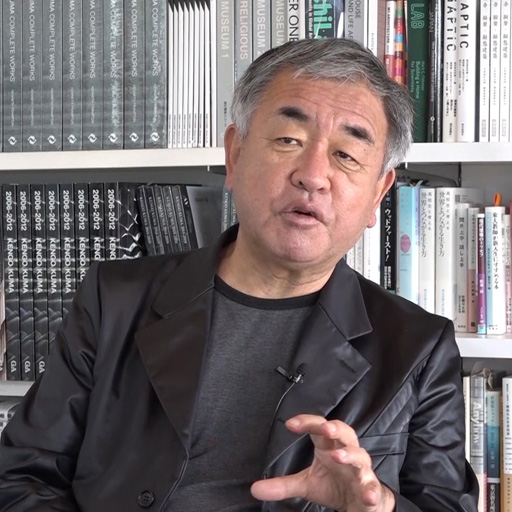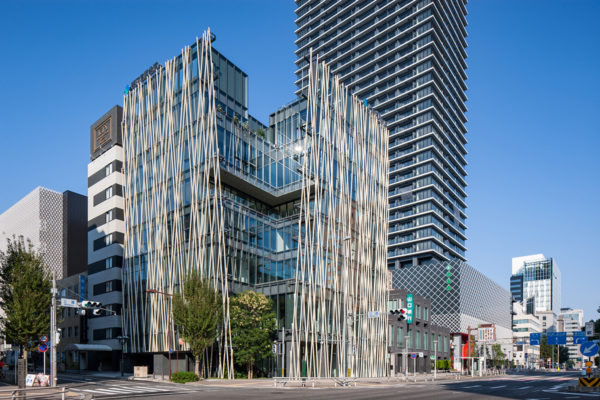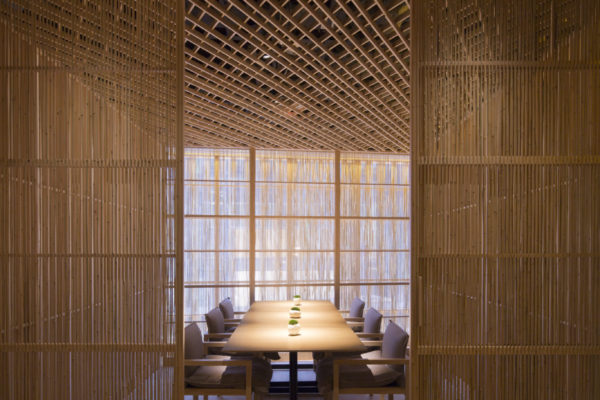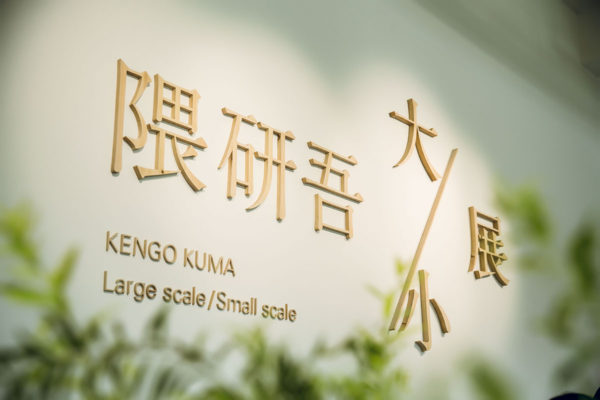#10 August 9, 2018
Professor Mario Carpo of London's Bartlett School is drawing attention from the world for his research into the similarities between computational design and the design before the age of industrialization. We recently had dinner together at a restaurant in London called Sakeno-Hana, designed by KKAA, to discuss the future of architecture and design. The interior of Sakeno-Hana is made with small units of wood and bamboo, typically produced through computational design. Mediating between those particles and computers, however, is the craftsmanship of wood-joinery which has developed in the time between the distant past and today. We talked at great length about this – stressing that with the rough engineering of the 21st century alone we couldn’t have achieved the rich and complex structures that we see today.
I thought perhaps Mario’s sharp insight was nurtured by his research on Renaissance architecture, which includes the architect Leon Battista Alberti. Mario categorizes the age of digital design into two groups; ‘first’ and ‘second’ generations. Those belonging to the first generation were worshippers of “curves,” which reflected an appreciation for streamlined shapes during the industrialized society. The second generation, however was liberated from it. Around the time that the first generation was beginning, I returned from my year at Columbia University. Feeling awkward about the trend, I was drawn more to particleization, for which KKAA is now well-known. Through my discussion with Mario, I could well understand the path of my own design.

ProjectsMisono-Za
 Nagoya has long cultivated performance art and artists and is known as the place of entertainment within Japan. Mizono-za, is located in the center of Nagoya’s theater district and we were tasked with reviving the historic space. The building is a new and unusual complex in that it integrates a shop … Read More
Nagoya has long cultivated performance art and artists and is known as the place of entertainment within Japan. Mizono-za, is located in the center of Nagoya’s theater district and we were tasked with reviving the historic space. The building is a new and unusual complex in that it integrates a shop … Read MoreProjectsHekikai Shinkin Bank Misono
 The Hekikai Shin-yo Kinko is located at the center of Nagoya city. It is an office building for the bank covered with wooden lattice that produces warm and humane atmosphere. We installed a green space named Green Void at a point facing the intersection and made it as a cubic green that joins the gr … Read More
The Hekikai Shin-yo Kinko is located at the center of Nagoya city. It is an office building for the bank covered with wooden lattice that produces warm and humane atmosphere. We installed a green space named Green Void at a point facing the intersection and made it as a cubic green that joins the gr … Read MoreProjectsTaké
 According to the old Chinese story "Seven Wise Men of the Bamboo Grove", the grove has healing powers. In order to elicit the feeling of dining within a bamboo grove, we used bamboo (také in Japanese) everywhere and in as many ways possible, creating an expansive Japanese restaurant here in Hong Kon … Read More
According to the old Chinese story "Seven Wise Men of the Bamboo Grove", the grove has healing powers. In order to elicit the feeling of dining within a bamboo grove, we used bamboo (také in Japanese) everywhere and in as many ways possible, creating an expansive Japanese restaurant here in Hong Kon … Read MoreNewsKengo Kuma Large scale/ Small scale
 Kengo Kuma exhibition at Beijing, China. July 14, 2018 - August 31, 2018 (close on Mondays) 10:00-18:00 Lei Shing Hong Center, 8 Guangshun South Street, Chaoyang District, Beijing, China. KENGO KUMA Large scale/ Small scale Read More
Kengo Kuma exhibition at Beijing, China. July 14, 2018 - August 31, 2018 (close on Mondays) 10:00-18:00 Lei Shing Hong Center, 8 Guangshun South Street, Chaoyang District, Beijing, China. KENGO KUMA Large scale/ Small scale Read More